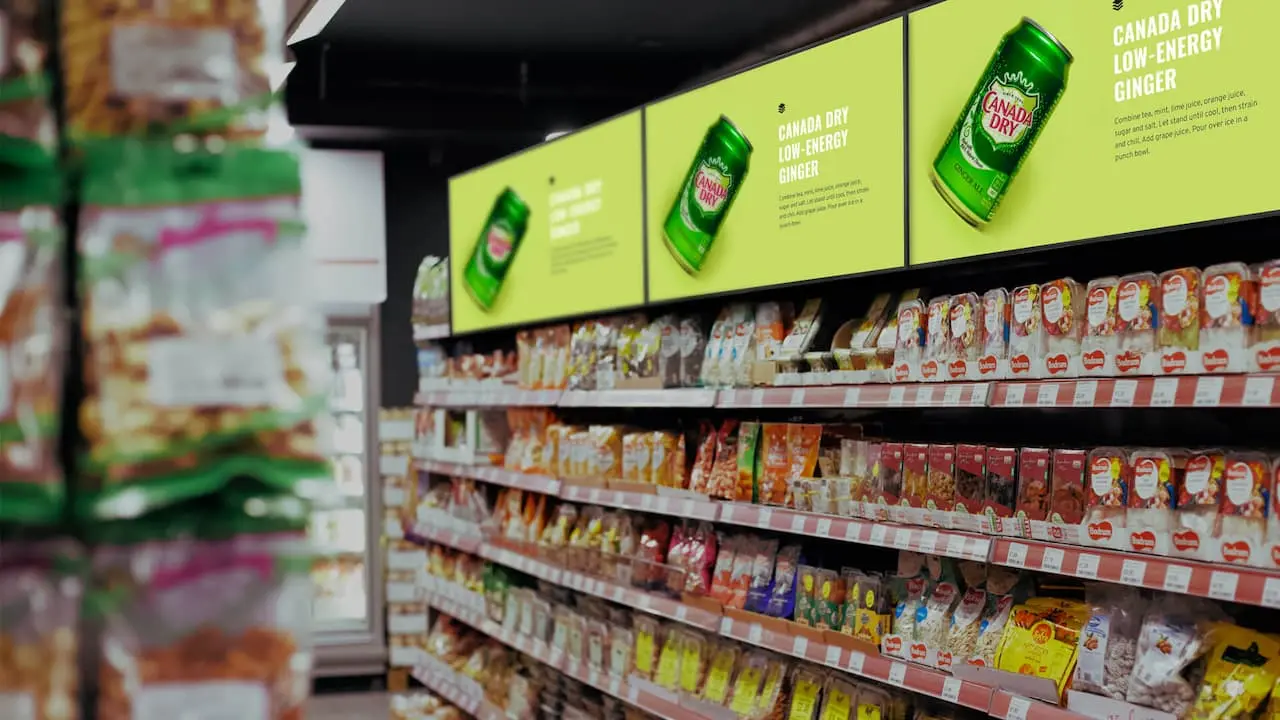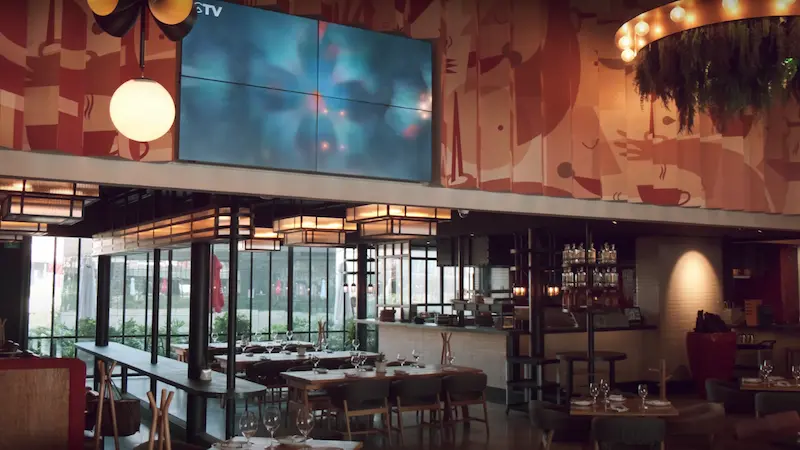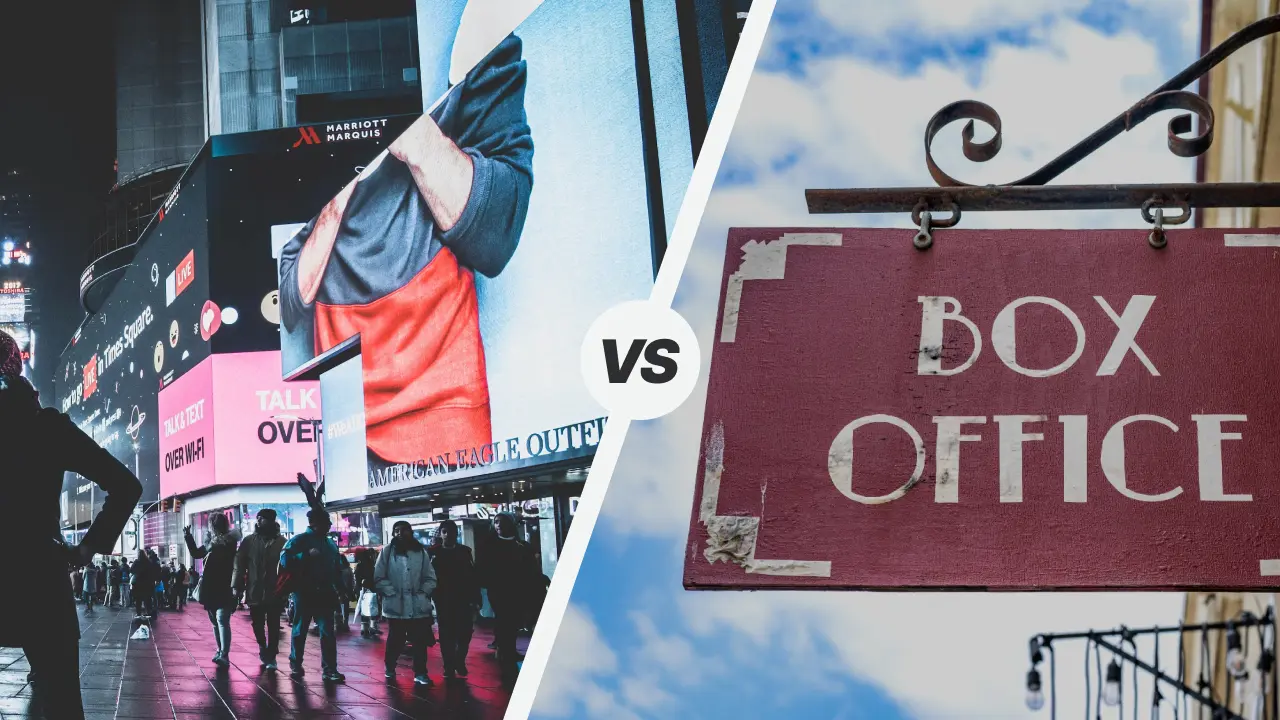
Table of Content
In a time when eCommerce has taken the reigns, the retail industry remains afloat by taking control of the in-store experience. Even though digital carts and delivery services are rapidly reshaping consumer habits, 95% of consumers still prefer browsing aisles and picking items off the shelves.
Supermarkets are transforming the shopping experience using immersive digital displays that guide, entertain, and inform customers. By merging regular shopping with new digital features, supermarket signage redefines the future of retail by bridging the gap between online convenience and the in-store shopping experience.
The Importance of Effective Signage
Enhancing Customer Experience
Digital signs, especially when integrated into retail display shelves, are more than just simple displays. They provide an immersive shopping experience by diving into detailed product information and customer reviews that enable informed decision-making.
When integrated with loyalty schemes or mobile applications, interactive displays can curate a personalized shopping journey by suggesting products based on individual preferences or purchase history.
The multimedia capabilities of digital signage for retail are evident when introducing products, as videos or animations provide a richer understanding than traditional static advertisements.
Navigational Enhancement & Discovery
Wayfinding digital signage marries exploration with efficiency by guiding customers to their desired items.
Digital displays complement the streamlined navigation by highlighting promotions, showcasing new product launches, or pointing out under-the-radar items that a shopper might otherwise overlook.
Tech-Driven Signage
Rise of Interactive Displays & Real-Time Updates

Interactive digital signage displays in supermarkets facilitate real-time content updates, ensuring that promotional offers and essential store information are always current. This keeps both the retailer and the customer consistently informed and on the same page.
Interactive displays don’t just cater to information dissemination but also allow instant customer feedback which allows shoppers to rate products or services on the spot. This immediate feedback loop can help supermarkets refine their offerings in near real time.
IoT Integration
Integrating IoT into supermarket signage is making a big difference in the shopping experience. When a store launches a new product, they can put small sensors on it, so if a customer picks it up, a nearby screen can provide the product’s backstory and potential uses. In addition to that, if a shopper looks at items on the store’s app, the in-store signs can show special deals or similar items. Such IoT-driven innovations in signage elevate the shopping experience, making it more interactive, personal, and informative.
Sustainable Signage: Beyond Aesthetics
Eco-Friendly Materials & Methods
As environmental concerns amplify, most supermarkets are pivoting to eco-friendly materials and production methods for their signage. This might entail using recycled or biodegradable materials or leveraging solar-powered digital displays.
Such innovations don't just reduce the environmental footprint but also cater to a growing segment of eco-conscious shoppers. This move signifies a broader shift in the retail sector, where sustainability is being put into action even in foundational elements like signage.
Conveying Sustainability Commitment to Customers
Sustainable signage plays a vital role in communicating a brand’s commitment to environmental sustainability. By displaying eco-credentials prominently, be it through certifications, sourcing information, or sustainability goals, supermarkets can win the trust and loyalty of environmentally aware consumers.
We are in an era where consumers gravitate towards the brands that align with their values and a supermarket’s sustainability-focused signage can genuinely set it apart.
Immersive Shopping: AR & VR Integration

Virtual Product Try-Ons
Supermarket signage is reshaping the way consumers interact with products by embracing virtual reality. In the furniture or home decor aisle, for instance, customers can use VR to virtually place a piece of furniture or decorative item in a simulated room setting. This allows them to visualize how it would fit and look in their own homes before making a purchase.
These virtual try-ons not only enhance the shopping experience but also help supermarkets reduce product returns and increase the likelihood of satisfactory purchases.
Making Informed Choices with Augmented Reality
Merging digital signage with Augmented Reality (AR) makes the decision-making process much more manageable. Shoppers can point their smartphones at a product and, through AR overlays on digital signs, receive instant information – be it nutritional details, origin stories, or user reviews.
For products with complex specifications or usage guidelines, AR can provide visual demonstrations or comparisons, to equip shoppers with adequate knowledge to make better purchasing decisions.
Data and Analytics in Signage
Personalizing the Shopping Experience
Supermarkets are harnessing the power of data-driven signage to personalize the shopping journey. Retailers can leverage the data analytics capabilities of CMS software in their digital signage to display dynamic, engaging content based on user behavior and content trends.
In doing so, shoppers encounter a more intuitive and tailored environment that enhances their in-store experience.
Tracking Performance & Strategy Optimization
At the same time, digital signs keep track of the duration of customer interaction, which promotions get clicked on the most, and what products are more popular with customers. This data provides feedback on the necessary changes or improvements. In the long run, this information helps retailers plan their marketing, adjust how they set up their stores, and decide what products to have in stock.
Future of Signage in Retail
Predictions for Upcoming Innovations
- The global QR Code Labels Market is set to grow from $916.7 million in 2020 to $1268.1 million by 2026, reflecting its increasing integration with digital signage in retail. This fusion will enhance the connection between personal smartphones and public screens in supermarkets, providing valuable data for retailers and enabling better business decisions.
- According to Market Research Future, the global live-streaming market is anticipated to expand from USD 71.63 billion in 2023 to a staggering USD 559.62 billion by 2023. This means that retailers integrating live streaming into their digital signage will significantly enhance real-time engagement and customer interaction in their stores. For instance, supermarkets can host a masterclass by a renowned chef on their signage, and customers watching this can instantly buy the products being showcased.
Preparing Retailers for a Transformative Experience
For supermarkets to maximize the benefits of digital signage, they need to prepare thoroughly, first by training their staff to use the technology effectively. The existing systems might also require updates to accommodate these advanced displays and manage data efficiently.
Retailers can collaborate with technology experts to ensure their digital content is relevant and appealing to shoppers. They can also implement consistent feedback mechanisms which will enable timely adjustments in response to customer feedback.
Integrating LOOK DS Into Supermarket Signage
What truly transforms a simple shopping trip into an experience is not only the aesthetic appeal of your digital screens but how content is delivered. LOOK DS streamlines how you present and manage information and makes it easier for staff to update promotions, product details, and even store events. With real-time updates and a user-friendly interface, you can ensure that your customers always have the latest information at their fingertips.







